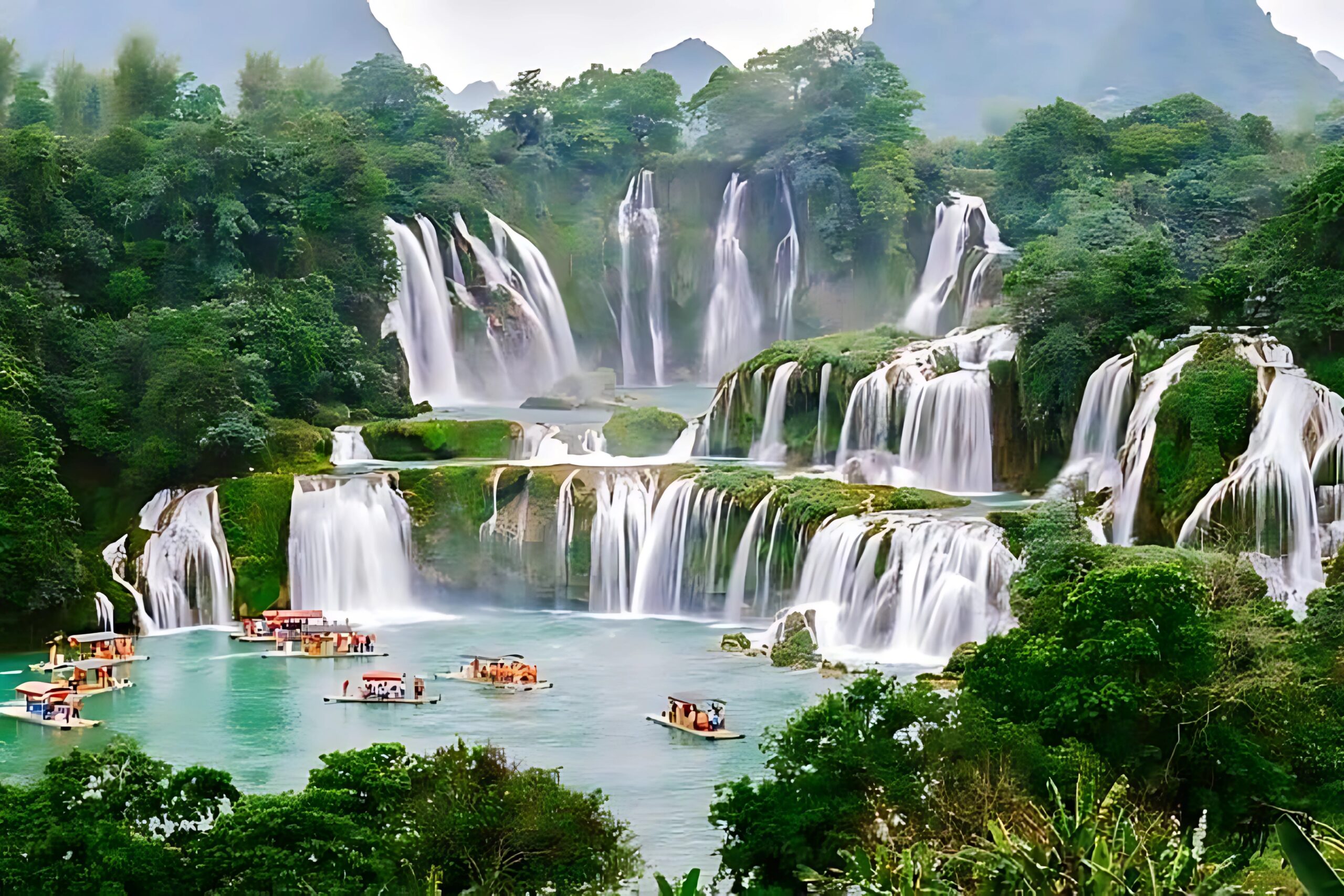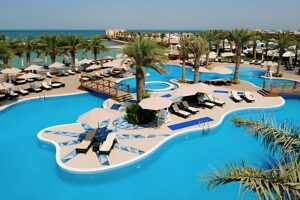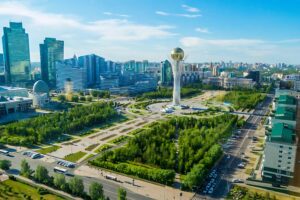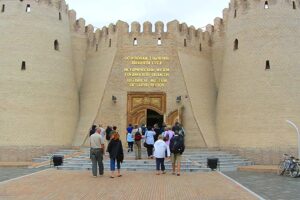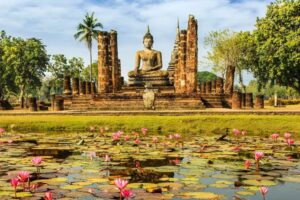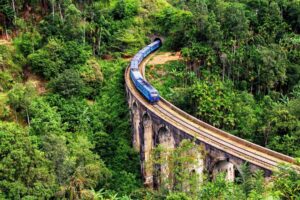Vietnam is a vibrant country that offers a mix of cultural heritage, stunning natural landscapes, and bustling cities. From its beautiful beaches and dramatic mountains to its historical landmarks and ancient cities, Vietnam is a dream destination for travelers. Here’s a list of the top places to visit in Vietnam:
1. Hanoi
Hoan Kiem Lake: Located in the heart of Hanoi, this serene lake is a symbol of the city. At its center is Ngoc Son Temple, which is accessible via a charming red bridge. The area is great for walking, people-watching, or just enjoying the tranquility.
Old Quarter: Known for its narrow streets, colonial architecture, and traditional shops, the Old Quarter is the perfect place to experience Hanoi’s bustling atmosphere. It’s famous for its street food, including pho (Vietnamese noodle soup), banh mi (Vietnamese sandwich), and egg coffee.
Ho Chi Minh Mausoleum: A monumental structure in Ba Dinh Square, the mausoleum houses the preserved body of Ho Chi Minh, the revolutionary leader who served as Vietnam’s first president.
Temple of Literature: Founded in 1070, this Confucian temple is Vietnam’s first national university and a peaceful spot for reflection and history.
2. Ha Long Bay
Ha Long Bay is one of Vietnam’s most iconic natural wonders. Known for its emerald waters and thousands of towering limestone islands topped with rainforests, it’s a UNESCO World Heritage Site. Visitors can enjoy a cruise around the bay, go kayaking, or visit caves like the Sung Sot Cave (Surprise Cave) and Ti Top Island for panoramic views of the bay.
Cat Ba Island, part of the Ha Long Bay archipelago, offers hiking trails and beach activities.
3. Sapa
Located in the northern mountains, Sapa is famous for its terraced rice fields, mountain trekking, and unique ethnic minorities like the Hmong and Tay people. The views of the mountains, valleys, and traditional villages make Sapa a perfect destination for trekkers and nature lovers.
Fansipan, the highest peak in Indochina, offers an adventurous hike or a cable car ride with spectacular views.
4. Phong Nha-Kẻ Bàng National Park
A UNESCO World Heritage Site, Phong Nha-Kẻ Bàng is home to some of the largest and most impressive caves in the world, including the Son Doong Cave, the largest cave in the world. The park also features Phong Nha Cave, Paradise Cave, and Dark Cave, offering various options for caving, trekking, and swimming in underground rivers.
En Cave, located near Son Doong, is also famous for its awe-inspiring beauty and adventure opportunities.
5. Hue
Imperial City (The Citadel): A UNESCO World Heritage Site, the Imperial City in Hue is a vast complex of palaces, temples, gates, and gardens that served as the home of the Nguyen dynasty emperors from 1802 to 1945. Visitors can explore the royal grounds and learn about Vietnam’s imperial past.
Thien Mu Pagoda: This seven-story pagoda overlooks the Perfume River and is one of Vietnam’s most famous landmarks.
Tombs of the Emperors: The tombs of Emperor Minh Mang, Emperor Tu Duc, and Emperor Khai Dinh are spread along the Perfume River and are magnificent examples of imperial architecture.
6. Hoi An
Ancient Town: The UNESCO-listed Ancient Town of Hoi An is renowned for its beautifully preserved Hispanic, Chinese, and Japanese architecture. The old streets are lined with vibrant yellow buildings, narrow alleys, and quaint shops. It’s also famous for its lantern-lit evenings.
Hoi An Beach: For a more relaxed atmosphere, Hoi An has several nearby beaches like An Bang and Cua Dai for swimming, sunbathing, and fresh seafood.
Tailoring: Hoi An is famous for its tailoring shops where you can get custom-made clothes, from suits to dresses, at affordable prices.
7. Da Nang
My Khe Beach: One of Vietnam’s most beautiful beaches, My Khe is famous for its long stretch of golden sand, perfect for swimming, sunbathing, and water sports.
Marble Mountains: A group of five limestone and marble hills with caves, temples, and panoramic views of the surrounding area.
Ba Na Hills: Known for the Golden Bridge held up by gigantic stone hands, Ba Na Hills is a mountain resort that offers cable car rides, stunning views, and a mix of theme parks, gardens, and temples.
Dragon Bridge: A modern architectural landmark, the Dragon Bridge lights up at night and offers a spectacular dragon-shaped sculpture.
8. Nha Trang
Known for its beaches, Nha Trang is a popular coastal city with plenty of water activities like scuba diving, snorkeling, and boat tours.
Po Nagar Cham Towers: An ancient Hindu temple complex dating back to the 8th century, offering both historical and architectural significance.
Vinpearl Amusement Park: A large resort and amusement park located on an island, accessible by cable car over the sea.
9. Ho Chi Minh City (Saigon)
War Remnants Museum: This museum provides a powerful and emotional look at the Vietnam War through exhibits, photographs, and military artifacts.
Notre-Dame Cathedral Basilica of Saigon: A beautiful French colonial building located in the heart of the city, surrounded by green parks and cafes.
Cu Chi Tunnels: Located just outside the city, the Cu Chi Tunnels are an extensive network of underground tunnels used by the Viet Cong during the Vietnam War.
Ben Thanh Market: A bustling market offering souvenirs, clothes, fresh produce, and street food like pho and banh xeo (Vietnamese pancakes).
Saigon Opera House: A beautiful example of French colonial architecture, offering performances of classical music, opera, and ballet.
10. Mekong Delta
Known as the “Rice Bowl” of Vietnam, the Mekong Delta is a network of rivers, swamps, and islands in the south of the country. The area offers boat tours, floating markets (like Cai Rang Market), traditional villages, and opportunities to see local life in action. Can Tho and My Tho are popular gateways to the delta.
11. Phu Quoc Island
Phu Quoc is Vietnam’s largest island, known for its pristine beaches, crystal-clear waters, and rich marine life. It’s ideal for snorkeling, diving, and beach resorts.
Vinpearl Safari: An animal safari park on the island featuring a variety of exotic wildlife.
Dinh Cau Night Market: A bustling market offering local seafood, street food, and souvenirs.
12. Cao Dai Temple & Tay Ninh
Located near Ho Chi Minh City, the Cao Dai Temple is the center of the Cao Dai religion, which combines elements of Buddhism, Christianity, Confucianism, and Taoism. The temple is known for its colorful and unique architecture, and visitors can observe the religious ceremonies held there.
Tay Ninh: The region surrounding the temple is also known for its scenic countryside and historical significance.
13. Ha Giang
A remote northern province known for its stunning mountain landscapes, Ha Giang is a paradise for adventure seekers. Dong Van Karst Plateau offers dramatic cliffs, terraced rice fields, and ethnic villages. The Ma Pi Leng Pass offers one of the most scenic drives in Vietnam.
14. Con Dao Islands
Con Dao is a group of islands known for their beautiful beaches, coral reefs, and history as a former French colonial prison site. The islands offer hiking, diving, and a chance to relax in a more tranquil environment away from the crowds.
15. Tam Coc & Ninh Binh
Often called “Halong Bay on land,” Tam Coc in Ninh Binh is a picturesque region known for its limestone karsts, lush rice fields, and tranquil rivers. Visitors can take boat rides along the river through caves and admire the surrounding scenery. The nearby Trang An Scenic Landscape Complex is also a UNESCO World Heritage Site.
Tips for Traveling in Vietnam:
Best Time to Visit: Vietnam is a long country with varying climates. The best time to visit is typically spring (March to April) or autumn (September to November) when the weather is mild. The south is warm year-round, while the north can be cold in winter.
Language: The official language is Vietnamese. English is widely spoken in major tourist areas, but learning a few basic phrases in Vietnamese can be very helpful.
Currency: The Vietnamese Dong (VND)

